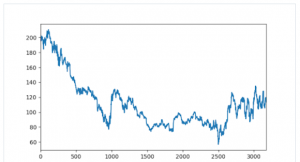The best way to normalize price data so that all prices start at 1.0
df1 = df1/df1[0]
import os
import pandas as pd
import matplotlib.pyplot as plt
def plot_selected(df, columns, start_index, end_index):
def symbol_to_path(symbol, base_dir="data"):
"""Return CSV file path given ticker symbol."""
return os.path.join(base_dir, "{}.csv".format(str(symbol)))
def get_data(symbols, dates):
df = pd.DataFrame(index=dates)
if 'SPY' not in symbols:
symbols.insert(0, 'SPY')
for symbol in symbols:
df_temp = pd.read_csv(symbol_to_path(symbol), index_col='Date',
parse_dates=True, usecols=['Date', 'Adj Close'], na_values=['nan'])
df_temp = df_temp.rename(colums={'Adj Close': symbol})
df = df.join(df_temp)
if symbol = 'SPY':
df = df.dropna(subset=["SPY"])
return df
def plot_data(df, title="Stock prices"):
ax = df.plot(title=title, fontsize=12)
ax.set_xlabel("Date")
ax.set_ylabel("Price")
plt.show()
def test_run():
dates = pd.date_range('2010-01-01', '2010-12-31')
symbols = ['GOOG', 'IBM', 'GLD']
df = get_data(symbols, dates)
plot_selected(df, ['SPY', 'IBM'], '2010-03-01', '2010-04-01')
if __name__ == "__main__":
test_run()

